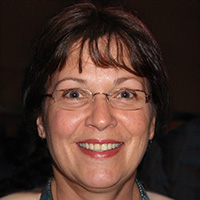The definition of ‘ALS’:
The acronym for Amyotrophic lateral sclerosis (ALS) refers to amyotrophic lateral sclerosis. The name indicates its main characteristics:
- “Sclerosis”: Loss of nerve fibres
- “Lateral”: This affects the lateral area of the spinal cord, which is made up of nerve fibres that are responsible for controlling the movements we make voluntarily.
- “Amyotrophic”: Muscular atrophy that occurs as a consequence of chronic muscular inactivity, when the muscles stop receiving nerve signals.
What is Amyotrophic lateral sclerosis (ALS)?
The prestigious scientist Stephen Hawking was diagnosed at the age of 21 with ALS.
It is a disease of the central nervous system, causing progressive degeneration of the motor neurons in the brain and spinal cord.
As a consequence, the muscles are weakened and can become paralysed, which can lead to the expansion of the muscles from one part of the body to another.
Symptoms of Amyotrophic lateral sclerosis (ALS):
The main symptoms of ALS are:
- Feeling of excessive tiredness and heaviness.
- Difficulties in swallowing and speaking (slowness of speech or complications in the articulation of words).
- Weakness or clumsiness in moving hands and legs.
- Muscle cramps and contractions.
- Muscle stiffness.
- Loss of weight.
- Uncontrolled episodes of laughing or crying.
- Changes in behaviour.
- Depression as a consequence of the very fatigue that the disease generates.
These symptoms will worsen as the disease progresses, so that the first symptoms will affect leg mobility.Suchsymptoms can make it difficult to perform simple tasks such as buttoning your shirt, turning door knobs or writing. Research has found that these are highly patient-dependent, so that each person may be affected by a different part of the body.
With regard to the symptoms of pain, it is important to say that generally there is no pain, either in the early or advanced stages.
Similarly, it usually does not affect the senses, so that sight, taste, smell, hearing and touch remain unaffected.
Causes of Amyotrophic lateral sclerosis (ALS):
ALS mainly affects people between the ages of 40 and 70. It is particularly prevalent among males.
Scientists have not yet discovered what causes ALS and why it attacks some people and not others. What some research has found, however, is that both genetics and environment play an important role in the development of the disease.
- Genetics:
Between 5 and 10% of the diagnoses establish hereditary causes. In most of these cases with hereditary ALS, there is a 50% chance that their children will develop the disease.
On the other hand, other genetic causes could be frontotemporal dementia (degeneration of the frontal lobe of the brain) and some genetic mutations that occur in an ALS patient.
- Environment:
Among the possible causes of ALS, some studies also attest to the incidence of environmental factors. Among the many factors that researchers consider are exposure to toxic substances or infectious organisms, performance of risky physical activities, consumption of a certain diet, and occupational and behavioural circumstances.
Diagnosis of Amyotrophic lateral sclerosis (ALS)
The diagnosis of ALS presents a major complication. In fact, no test offers a completely accurate and definitive diagnosis.
The strongest indication is the degeneration of the upper and lower motor neurons. Along with this, the tools that doctors have at their disposal for diagnosis are the signs and symptoms detected by a physical examination, the patient’s own medical history and a series of tests to rule out other diseases with which ALS can be confused.
These tests are usually the following:
- Electromyography.
- Magnetic resonance imaging.
- Complete neurological examination.
- Nerve conduction study.
- Lumbar puncture.
- Biopsy of muscles and/or nerves.
- Laboratory tests such as blood and urine tests.
In the early stages, the symptoms of ALS are similar to those of many other more treatable and less serious disorders and conditions. Therefore, appropriate testing becomes crucial.
Types of Amyotrophic lateral sclerosis (ALS):
- Sporadic
It is the most common form of ALS, affecting 90-95% of people with the disease. It appears for unknown reasons, as there is no risk factor (either familial or environmental) to which the appearance of the disease can be associated.
- Family
It is the contracted one by the genetic inheritance. So far, it has been known that it is due to the existence of a genetically controlled enzyme, although it has not yet been possible to determine exactly how genetic factors influence ALS. It corresponds to 5-10% of cases.
- Bulbar:
The symptoms begin in the mouth muscles. It is the one that evolves the fastest and, from the beginning, complications occur in swallowing and speech, abundant salivation and increased mucus.
- Common
It manifests itself for the first time in an upper limb. One of the first symptoms is the loss of strength in the hand or arms, which leads to the complication of performing actions such as grasping or handling objects.
- Pseudo-polyneuritics
It starts at a lower limb. The patient begins to feel weakness in the foot, which may manifest itself in difficulty in extending the big toe or the sensation of a dropped foot.
Amyotrophic lateral sclerosis (ALS) Treatment:
The cure for the disease has not yet been found. However, although there is no curative treatment, there is a palliative one. With treatments of this type, symptoms can be mitigated to avoid the most serious complications and help improve the quality of life of people suffering from the disease.
Since ALS affects different parts of the body and both physically and psychologically. The best care is provided by multidisciplinary teams of health professionals such as neurologists, physical therapists, educationalists, nutritionists, clinical psychologists and palliative care nurses.
Other outstanding professionals are also the caregivers, who will provide individualized, home-based care that will facilitate the day-to-day life of the patient and family.
Therapy will have to be of different types:
- Physical therapy
Gentle, low-impact aerobic exercise will improve cardiovascular health and, at the same time, help combat fatigue and depression. Exercises of this type are walking, swimming or riding an exercise bike. On the other hand, stretching exercises will also produce great benefits for the patient, as they will reduce the contraction of the muscles. Therapists can also recommend the use of equipment to help with the exercises. Some of the most common are walkers, ramps or braces.
- Speech therapy
Speech therapy is a key discipline in the treatment of ALS. As noted above, one of the main symptoms is difficulty in speaking. This type of therapy is also important for swallowing and chewing, as well as breathing. These three, speaking, eating and breathing, are the most common activities in the daily routine, so in the patient with ALS, the help of a speech therapist is indispensable.
Thanks to technological advances, one of the resources available to them is the use of voice banks. While they are still able to speak, they can store their own voice for future use through computerized language synthesizers. When the patient is no longer able to articulate words or produce vocal sounds, they can communicate through them.
- Nutritional support
It has been shown that ALS patients become too weak if they lose weight. To avoid this, nutritionists can create a diet plan that includes the consumption of all the nutrients needed to maintain weight. And, at the same time, foods that are easy to swallow and digest.
In some patients, the doctor may advise using a feeding tube in the stomach. This reduces the risk of dehydration and choking during meals.
Breathing support
As the disease progresses, the muscles responsible for breathing become weaker. Because of this, patients may have respiratory complications while sleeping or lying down and during physical activities. In the early stages of the disease, in order to improve the patient’s breathing, physicians may recommend the use of non-invasive ventilation. This is a breathing support that consists of a mask that covers the nose or mouth.
Initially it will be needed only at night. However, as ALS progresses, it will possibly need to be used all the time. In advanced stages, mechanical respirators, consisting of a machine that inflates and deflates the lungs, may be needed.
ALS: life expectancy
A patient with ALS has a life expectancy of 2 to 5 years. However, 20% of patients have a survival of more than 5 years and 10% have a survival of more than 10 years.
Are multiple sclerosis and ALS the same thing?
Multiple sclerosis (MS) and amyotrophic lateral sclerosis are different diseases.
Among their differences are the following:
- Neurological damage
Although both affect the nervous system, the neurological damage is different. In MS it occurs at the muscle level and in MS at the nerve function level. As a result, patients with lateral sclerosis experience physical deterioration, while those with multiple sclerosis experience more mental deterioration.
Thus, in ALS, motor neurons (those responsible for controlling voluntary muscles) are damaged and in MS, it is the immune system that is damaged (leading to nerve cell death).
- Symptoms of Multiple Sclerosis
The first symptoms of MS are present with the first outbreak of the disease. Among them, the most common are tingling, uncoordinated movement, muscle weakness and stiffness.
The person with MS, unlike the person with ALS, will not have difficulty swallowing or breathing, nor will he or she be paralysed.
- Types of patients
Multiple sclerosis mainly affects women between the ages of 20 and 40. ALS, as indicated above, is more common in men and at a higher age.
- Life expectancy
MS has a much longer life expectancy than ALS. In multiple sclerosis, if the patient receives appropriate treatment aimed at preventing progression of the disease, life expectancy is similar to that of the general population.
However, you are not alone..
Advances such as drugs, mechanical breathing or new neurorehabilitation exercises have, in recent years, provided a greater chance of survival. Along with this, the role of home caregivers has been described as vital. It has been shown that having a professional caregiver with knowledge of this type of pathology, such as the ones provided by Nomenial can improve the health and extends the life expectancy of the patient.







